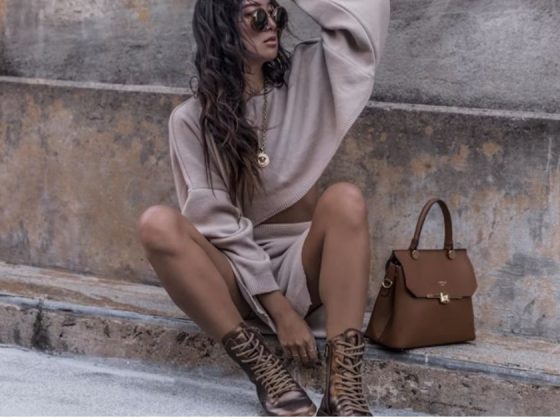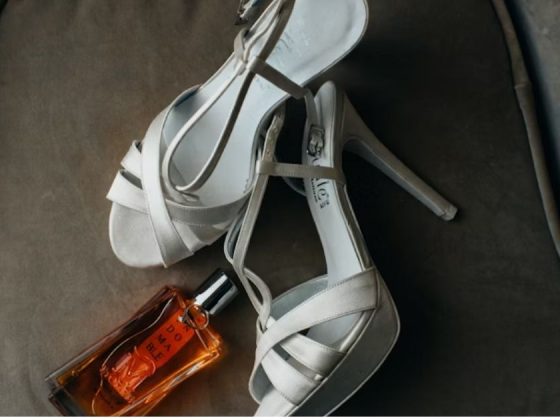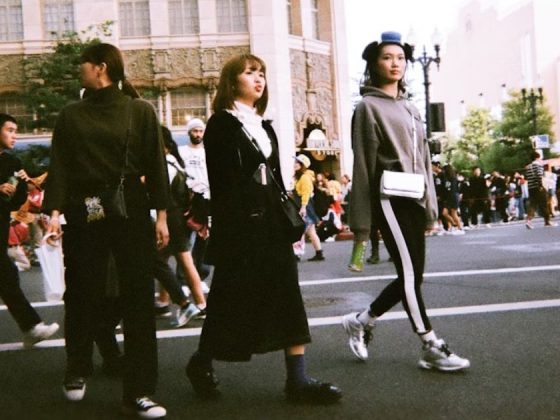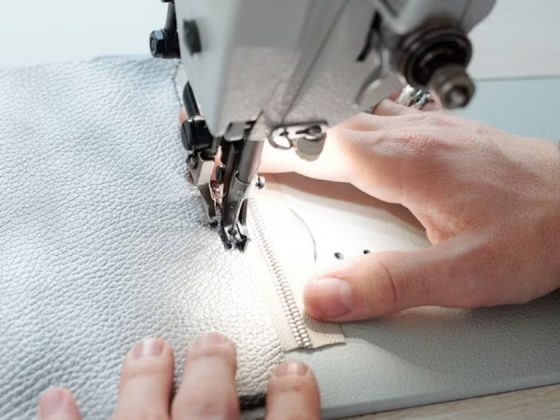Personal style goes beyond chasing every passing trend—it’s rooted in knowing what flatters the body and feels comfortable to wear. Rather than trying to fit into every seasonal shift, focusing on what enhances natural features creates a wardrobe that feels both authentic and empowering. Style becomes less about what’s “in” and more about what works for the individual, offering a strong foundation for consistent, confident dressing.
Flattering outfits begin with the right cuts and fabrics. Whether curvy, petite, athletic, or somewhere in between, thoughtful silhouettes can enhance both comfort and appearance. By focusing on structure, emphasizing natural lines, and selecting materials that move with the body, clothes become allies—not obstacles. The most flattering outfits don’t conceal—they highlight and celebrate your proportions with confidence and intention.
7 Flattering Outfits for All Shapes—No Trends Needed
1. Curvy Body Types: Embrace Structure and Softness
Curvy body types benefit most from a balance of structured tailoring and soft, figure-hugging fabrics. The goal is to highlight natural curves while providing enough support and definition to enhance rather than overwhelm the silhouette. Pieces like wrap dresses, peplum tops, and fit-and-flare dresses are especially flattering—they cinch at the waist and flare gently over the hips and thighs, creating a smooth and balanced shape. Belted styles also work wonders for creating definition at the midsection and highlighting an hourglass frame.
When it comes to fabric, think of materials that move with the body without clinging too tightly. Jersey, ponte knit, and stretch cotton offer flexibility, comfort, and subtle shaping without feeling restrictive. High-waisted pants elongate the legs and define the waist, while A-line skirts gracefully skim the hips. Necklines like V-necks or scoop necks draw the eye upward and create vertical lines, helping to balance the bust and visually elongate the upper body. Avoid oversized or boxy pieces that conceal curves—well-fitting garments that follow natural lines tend to be the most flattering and empowering.
2. Petite Frames: Go Tailored, Not Tiny
Petite body types—typically under 5’4″—shine brightest in clothes that create the illusion of height and elongation, without drowning the frame in excess fabric. The key is tailoring, not necessarily tiny sizing. Cropped jackets that hit just above the hip, high-rise jeans that lengthen the legs, and dresses with vertical seams or subtle pinstripes all work to elongate the silhouette. These pieces draw the eye upward, adding visual length without overwhelming proportions.
Fabric choice also plays a crucial role. Lightweight materials like satin, crepe, or fine wool provide structure without adding unnecessary bulk, allowing garments to skim the body gracefully. Monochromatic outfits—dressing in a single color head to toe—can further enhance the illusion of height, making the frame appear longer and more streamlined. Avoid oversized or shapeless styles that may look trendy but can easily overpower a petite figure. Instead, opt for clean lines, cropped lengths, and thoughtful proportions that bring balance and polish to smaller statures.
3. Athletic Builds: Add Curve and Dimension
Athletic or straight silhouettes, often defined by broader shoulders and a less pronounced waist, respond well to styles that introduce softness and shape. Rather than minimizing strength, the aim is to balance proportions through design choices that add curvature and visual interest. Garments like peplum tops, ruched dresses, and pleated or flared skirts help create the appearance of a more defined waist and fuller hips by adding volume in strategic areas. These design elements contribute to a more dimensional, sculpted look.
Fabric plays a key role in achieving this balance. Materials such as silk, chiffon, jersey, and lightweight knits offer natural drape, allowing the fabric to move fluidly rather than appear rigid. Halter necklines, sweetheart shapes, and belted styles help soften the upper body and direct focus toward the waist, supporting an overall sense of symmetry. Boxy or stiff garments tend to amplify angularity, so selecting cuts that cinch, contour, or flare can subtly enhance the figure and lend a graceful, feminine finish.
4. Apple Shapes: Define the Waist and Flow Away
Apple-shaped bodies—characterized by a fuller midsection, often with slimmer legs and arms—look best in styles that create the illusion of a waist while allowing fabric to flow away from the stomach area. The key is to draw the eye upward and gently contour the body without clinging. Empire-waist dresses, tunic tops, and A-line silhouettes are ideal for achieving this. These styles cinch just below the bust or skim past the torso, creating a flattering drape that elongates the frame and highlights other features like the neckline and legs.
Fabric choice is just as important as cut. Lightweight materials with a soft, flowing quality—such as modal, bamboo knits, and breathable cotton blends—offer comfort and gentle structure. V-necklines, scoop necks, and open collars are flattering for apple shapes, as they visually lengthen the neck and bring attention to the face. Structured blazers with a defined waist or open-front designs can help frame the torso and create a more balanced silhouette. Adding statement earrings or a bold neckline detail can also redirect focus upward, ensuring the overall look feels confident, polished, and proportionate..
5. Hourglass Figures: Show Off the Shape
With a naturally balanced silhouette—where the bust and hips are proportionate and the waist is distinct—the hourglass figure thrives in pieces that embrace and highlight these curves. Fitted styles are the cornerstone of this body type’s wardrobe. Wrap dresses, bodycon silhouettes, and belted blouses accentuate the waist and emphasize natural proportions without feeling overly revealing. Pencil skirts hug the hips and elongate the legs, while wide-leg or high-waisted trousers create a sleek, elongated line that balances the frame beautifully.
Fabric choice plays a major role in flattering an hourglass figure. Materials with stretch and drape—such as spandex-blended knits, silk jersey, and structured denim—offer comfort while subtly sculpting the body’s natural lines. These fabrics provide just enough give to follow curves without clinging or restricting movement. While the hourglass shape can pull off a wide range of styles, boxy or shapeless cuts should be approached with caution, as they tend to downplay the waist and hide the very proportions that make this figure so striking. With the right balance of tailoring and stretch, the result is a confident, effortlessly chic look that flatters from every angle.
6. Inverted Triangle: Balance the Upper Body
To harmonize proportions, styling leans toward pieces that ground the look with volume below—think cascading A-line skirts, wide-leg trousers, or tiered hems that add weight and movement to the lower half. Steering clear of structured shoulders or high necklines prevents additional emphasis up top, allowing the spotlight to shift gracefully downward and restore visual equilibrium.
Opt for fabrics that are light and flowy on the bottom to enhance movement and softness, such as chiffon, cotton voile, and satin. Meanwhile, structured but simple tops in darker shades can slim and downplay the shoulders. V-necks, scoop necks, and wrap tops help elongate the neckline while subtly drawing the eye inward, creating a more balanced and streamlined upper body. Look for tops with minimal embellishment or softer sleeves that won’t add bulk, while allowing the lower half to feature bold prints, colors, or texture.
7. Rectangle Body Types: Create Curves with Clever Cuts
Rectangular or straight body shapes typically feature balanced proportions between the shoulders and hips with minimal waist definition. Styling approaches that emphasize the midsection and add visual curves tend to be the most effective. Design elements such as peplum tops, ruched dresses, and belted jackets help to draw in the waist, while layered pieces—like cropped jackets over dresses or knotted tops paired with high-rise pants—build volume and dimension across the silhouette.
Stretch-friendly fabrics, including soft denim, jersey, and lightweight knits, provide subtle structure and contour, enhancing natural lines without stiffness. Bias-cut skirts and wrap dresses offer fluid movement and introduce curvature, while details such as ruffles, draping, and asymmetrical hems contribute to a more dynamic and softly feminine appearance. Strategic placement of patterns or prints around the waist and bust further enhances definition, breaking up the linear frame and creating a more sculpted visual effect.
Universal Styling Tips:
- Invest in Tailoring: Regardless of body type, clothes that fit perfectly will always flatter more than off-the-rack items that almost work.
- Accessorize Wisely: Belts define waists, statement necklaces draw the eye up, and the right shoes can elongate or anchor an outfit.
- Color and Print Placement: Use darker tones to downplay areas and lighter shades or patterns to highlight features.
Fashion becomes truly empowering when garments complement rather than conceal. Celebrating each body type with the right fabrics and cuts allows personal style to shine through authentically and confidently.
Fabric as the Foundation of Flattering Style
No matter the body type, fabric plays a starring role. Stiff materials can overwhelm smaller frames, while overly clingy fabrics might not flatter curvier areas. The trick is finding balance—structured and soft, supportive and forgiving. Lightweight knits, soft woven blends, and stretch-enhanced fabrics tend to offer the most versatility across body types.
Fashion isn’t one-size-fits-all—it’s a toolkit. When armed with knowledge of what suits a specific shape and texture, getting dressed becomes less about trial and error and more about expression and ease. Style, after all, should always feel like a celebration.














